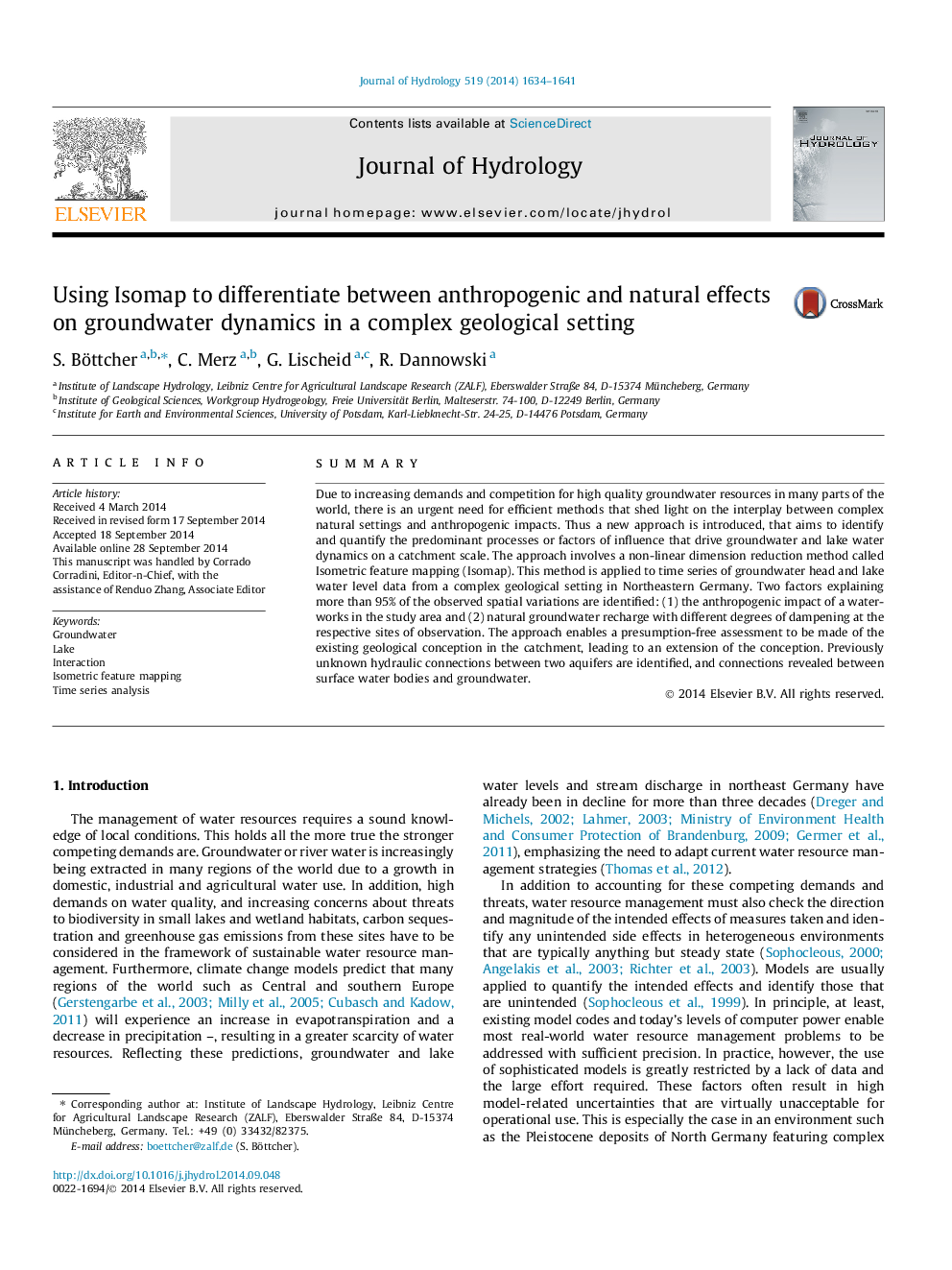| Article ID | Journal | Published Year | Pages | File Type |
|---|---|---|---|---|
| 6411969 | Journal of Hydrology | 2014 | 8 Pages |
â¢A new approach is presented to investigate ground and surface water dynamics.â¢Two processes were identified that explained 95% of the observed spatial variations.â¢Previously unknown cross-aquifer and surface water interactions were identified.
SummaryDue to increasing demands and competition for high quality groundwater resources in many parts of the world, there is an urgent need for efficient methods that shed light on the interplay between complex natural settings and anthropogenic impacts. Thus a new approach is introduced, that aims to identify and quantify the predominant processes or factors of influence that drive groundwater and lake water dynamics on a catchment scale. The approach involves a non-linear dimension reduction method called Isometric feature mapping (Isomap). This method is applied to time series of groundwater head and lake water level data from a complex geological setting in Northeastern Germany. Two factors explaining more than 95% of the observed spatial variations are identified: (1) the anthropogenic impact of a waterworks in the study area and (2) natural groundwater recharge with different degrees of dampening at the respective sites of observation. The approach enables a presumption-free assessment to be made of the existing geological conception in the catchment, leading to an extension of the conception. Previously unknown hydraulic connections between two aquifers are identified, and connections revealed between surface water bodies and groundwater.
